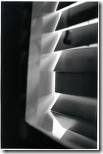 If a company wanted to buy your company, and you’re not really excited about it, what would you do? Of course, you’d just ask for a higher price. If you end up bought, you feel good that you made the deal better. And if you don’t get bought, you are still happy! We should have known this is exactly what Yahoo would do!
If a company wanted to buy your company, and you’re not really excited about it, what would you do? Of course, you’d just ask for a higher price. If you end up bought, you feel good that you made the deal better. And if you don’t get bought, you are still happy! We should have known this is exactly what Yahoo would do!
Month: February 2008
Burned by Facebook
I wrote a blog this morning about how Josh had used Facebook to learn more about the Yahoo attrition. While I was writing that, he must have been busy writing his public apology titled, “How to lose fans and (falsely) influence people“. Turns out not only did Facebook burn it’s users, but it burned him too. Due to Facebook’s aggressive advertising, he accidentally put pictures of people that *currently work at Yahoo* onto ads which read, “Leaving Yahoo!”. Of course, there is no indication that these poor folks had any intention of leaving. Yikes! Not only is that a gaffe, that’s just plain wrong!
None of this is Josh’s fault. This is Facebook’s broken platform.
Facebook Privacy Flaws Provide Insight into MicroHoo!
 Late last year, I stopped using Facebook when I witnessed them giving my personal information to advertisers.
Late last year, I stopped using Facebook when I witnessed them giving my personal information to advertisers.
The clever advertiser, Josh Koppelman, has exploited that data again to gain insight into potential employee turnover due to the MicroHoo possibility. The data is not statistically accurate, but it is definitely an interesting indicator.
Where’s Obama?
As politically incorrect as it is, I finally got around to doing my google search for “Osama Obama” today. It yields some very funny stuff.
Antec 80 Plus Power Supply
My desktop computer at home for years has had an Antec True 380W Power Supply. It’s worked well and I’ve never had any problems. Recently, I became interested in 80plus Power Supplies, and wondered if I could save significantly with one. I found that Antec is now producing a 80plus version of the same power supply I already had, so this made for a perfect comparison. Last week, I upgraded to the Antec Earthwatts 380W Power Supply!
SilentPCReviews has a great review of the Antec True Power Supply. Their tests show that it’s efficiency is somewhere between 65-68% for the loads my machine is currently using. According to the 80plus report for the Antec Earthwatts, it is ~82% efficient. Given that, I expected to see about a 20% improvement.
To measure, I bought myself a great tool, called the Kill-A-Watt. I highly recommend you get one if you don’t have one already. It cost about $23, and it’s been great for hyper-analyzing every appliance in the house.
I then ran some basic tests and here is are the measurements that my computer used at idle and peak loads:
| Antec 380W True | Antec 380W Earthwatts | Savings | |
| Idle Load | 120W | 83W | 31% |
| Peak Load | 214W | 156W | 27% |
SelectBlinds vs Blinds.com
 In the process of updating our living quarters, I had the opportunity to use both SelectBlinds.com and also Blinds.com for different window coverings in our house. Since my carpet review of Home Depot and Empire Carpet was so popular, it seems that people want to hear about this.
In the process of updating our living quarters, I had the opportunity to use both SelectBlinds.com and also Blinds.com for different window coverings in our house. Since my carpet review of Home Depot and Empire Carpet was so popular, it seems that people want to hear about this.
Blinds.com
Blinds.com was the first company we did business with. We ordered about 20 1″ wood blinds. The total cost was about $1000. The blinds arrived promptly – within about 2 weeks of our order. The blinds look great, and we haven’t had many complaints. Within a few months, one of the blinds that we ordered had the string break; we barely use the blinds, so we’re pretty sure it was a manufacturing issue. We contacted the company, they sent out a new one, and everything is fine. Overall, I think we got a really good price and the company honored their promises. Great.
SelectBlinds.com
I used SelectBlinds on a secondary order because this type of blind was cheaper than via Blinds.com. We wanted the honeycomb shades. These take a little longer to order, presumably because they sell less volume. They estimated 2 weeks. After 3 weeks had gone by, I hadn’t heard anything, so I contacted them via their website. No response. Instead, I called their 888 number, and the support person was fairly nice. She indicated that they’d have to contact the manufacturer, and then find out what happened – as our order had already passed to the manufacturer. They then did reply via email that they had contacted the manufacturer and that the order would be mailed “any day now”, and the order was finally processed over a week later. In all, it took about 4 weeks to get the blinds. Once finally received, the blinds were great; we like them and they installed fine.
Conclusion
Both companies provided what we asked for and the blinds look great. Blinds.com had a one low quality blind, which they fixed without trouble. SelectBlinds was a little late with delivery, but the blinds were less common ones. Overall, I think the two were exactly the same. My conclusion: use whatever coupons you can find and just pick the cheapest. The product, ease of installation, and promises on goods delivered is about the same.
Idea – Let’s Make Patents Defensive.
Patents always start out well-intentioned. Companies tell their employees, “We just need a few good patents for defensive purposes. If someone sues us, we need leverage.” Sadly, there is truth to this.
But patents last for seventeen years and the average start-up does not. So, once the company gets into financial trouble, those innocent ‘defensive’ patents can turn into funding to keep the company afloat for a short while longer, or worse, fall into a lawyer’s hands after the fire sale. A classic example of this is Visto, a once exciting Silicon Valley startup that never managed to quite make it ‘over the hump’. In 2005, the company sold equity to NTP (the lawyer group that sued RIM) and agreed to allow NTP access to Visto’s “defensive” patent portfolio aggressively. Visto/NTP have been filing lawsuits ever since.
If patents are indeed meant to be defensive when they are created, and all employers claim that they are, then we should create a contract which codifies this.
What if we could draft a contract, between the inventor(s) and the employer. The contract would give the company rights to the patent so long as the patent is only used for “defensive” purposes only. The patent would not be transferable to other companies. We could distribute this contract freely on the net, and encourage inventors to get their employers to sign them. Over time, hopefully the world would have a lot of “defensive” patents, but not aggressive ones. Of course, the legal definition of “defensive” is pretty tricky. Perhaps a non-transferable patent is the only feasible contract. I don’t know; I’m not a legal expert.
If you are a corporate attorney, and think this is a good idea, drop me a note.
